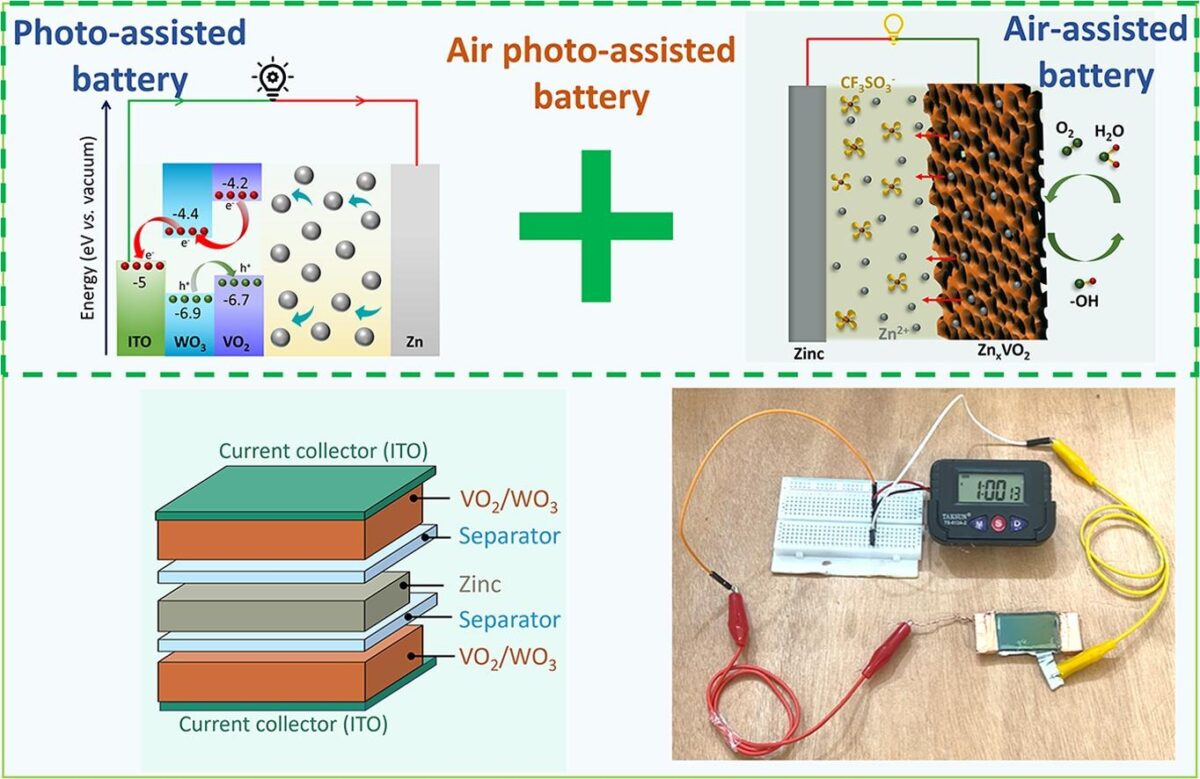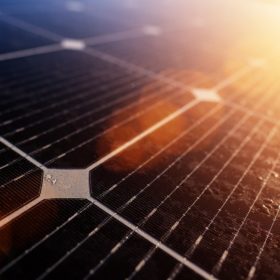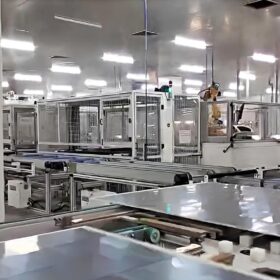Solar panels convert sunlight into electricity, but they rely on separate battery systems to store the energy for later use. A photo-assisted battery combines the light-capturing capability of solar cells and the energy storage of conventional batteries into a single device, creating a seamless synergy between solar energy conversion and storage.
While the photo-assisted process enhances the capacity of batteries in the presence of light, these batteries still need an external power supply to charge. To overcome this limitation, researchers have explored the “air-assisted self-charging” concept of aqueous zinc-ion batteries, aiming to utilize oxygen from the air to replenish the charge of the battery.
Researchers from the Centre for Nano and Soft Matter Sciences (CeNS), an autonomous institution under the Department of Science and Technology (DST) in Bengaluru, India, have developed a photo-assisted aqueous Zn-ion energy storage device that can charge by its own in the presence of oxygen from the atmosphere.
A team led by Dr. Ashutosh Kumar Singh explored the integration of photo-assisted and self-chargeable features into zinc-ion batteries, utilizing vanadium oxide (VO2) and tungsten trioxide (WO3) as the primary cathode material. This research marks the first utilization of WO3 as a charge-separating layer alongside VO2 in photo-assisted energy storage devices.
Under consistent light exposure, the device demonstrates a remarkable 170% increase in charge storage capacity at a constant current density of 0.02 mA/cm2, confirming the effectiveness of the photo-assisted charge separation mechanism. Additionally, the VO2 layer works as an air cathode electrode that can help air-assisted self-charging. The air-based charging achieves an open circuit potential (OCP) of 1 V, reaching 0.9 V OCP within 140 seconds, said the researchers.
The findings pave the way for integrating these devices into self-reliable electronics, potentially powered by renewable energy sources. This marks a major step forward in the pursuit of sustainable energy solutions and demostrates the practical utility of energy storage devices in modern technology.
The study on these smart energy storage devices, titled “Photo-assisted self-chargeable aqueous Zn-ion energy storage device,” is published in the Chemical Engineering Journal Vol. 500.
This content is protected by copyright and may not be reused. If you want to cooperate with us and would like to reuse some of our content, please contact: editors@pv-magazine.com.









By submitting this form you agree to pv magazine using your data for the purposes of publishing your comment.
Your personal data will only be disclosed or otherwise transmitted to third parties for the purposes of spam filtering or if this is necessary for technical maintenance of the website. Any other transfer to third parties will not take place unless this is justified on the basis of applicable data protection regulations or if pv magazine is legally obliged to do so.
You may revoke this consent at any time with effect for the future, in which case your personal data will be deleted immediately. Otherwise, your data will be deleted if pv magazine has processed your request or the purpose of data storage is fulfilled.
Further information on data privacy can be found in our Data Protection Policy.